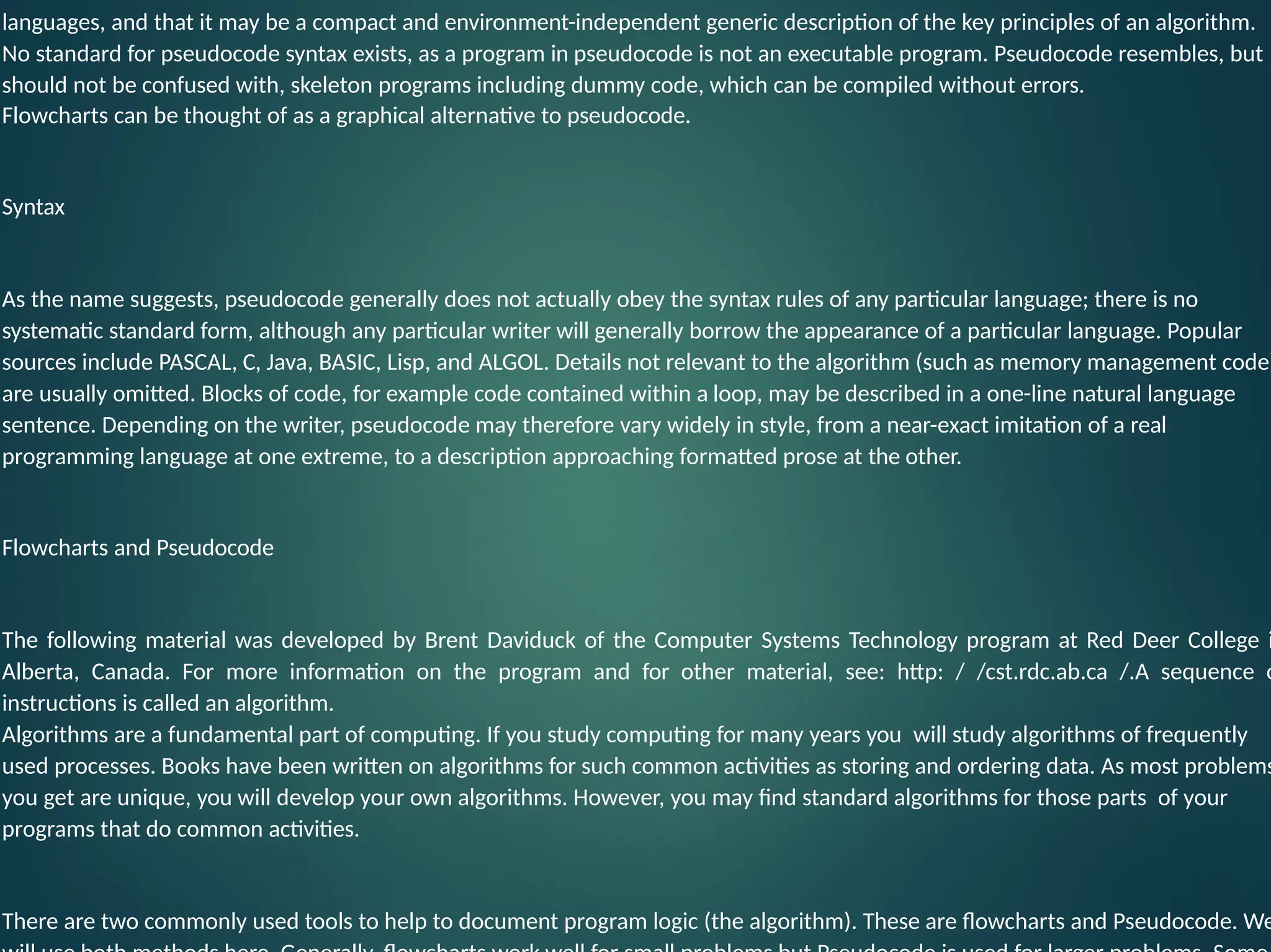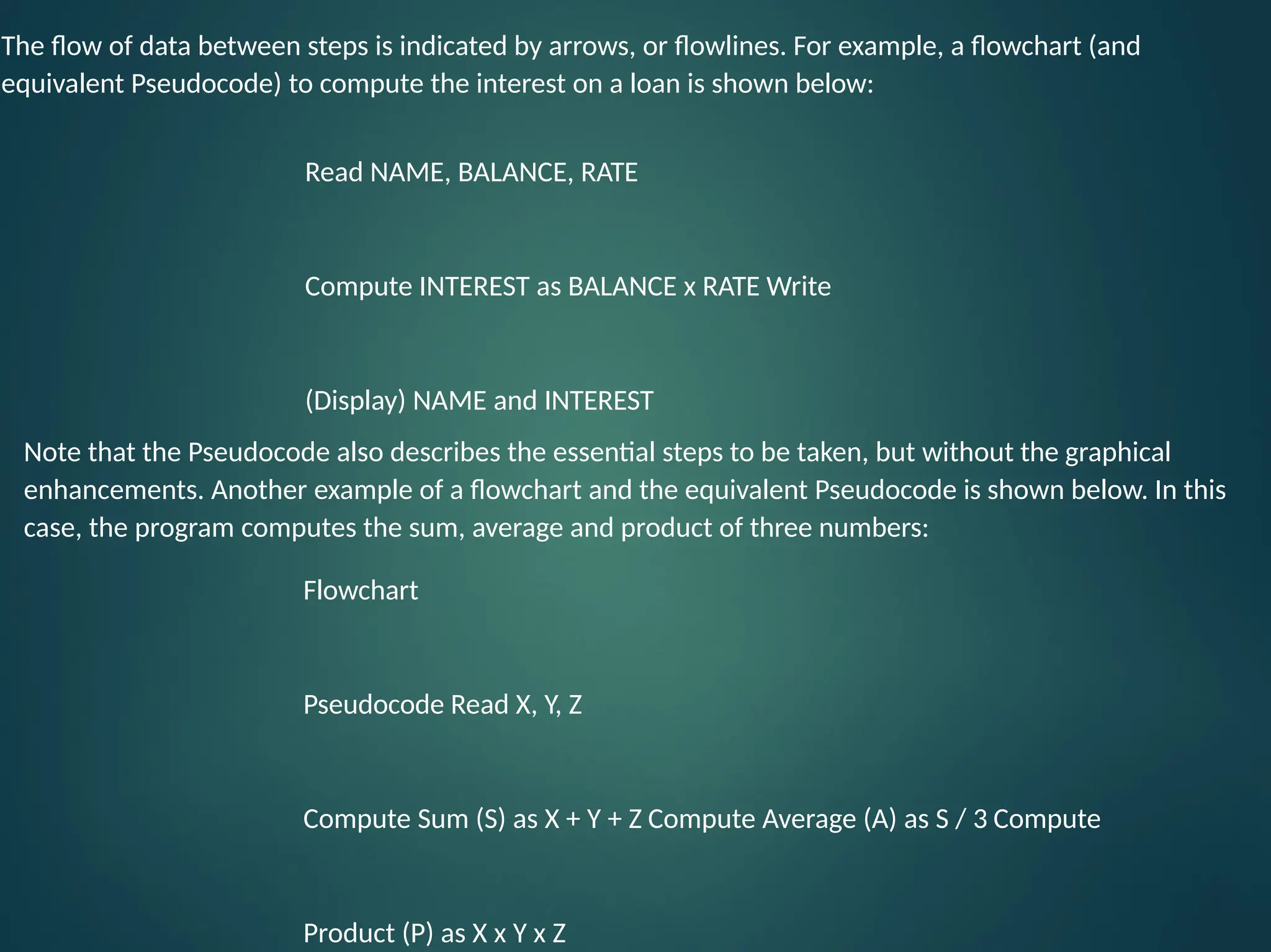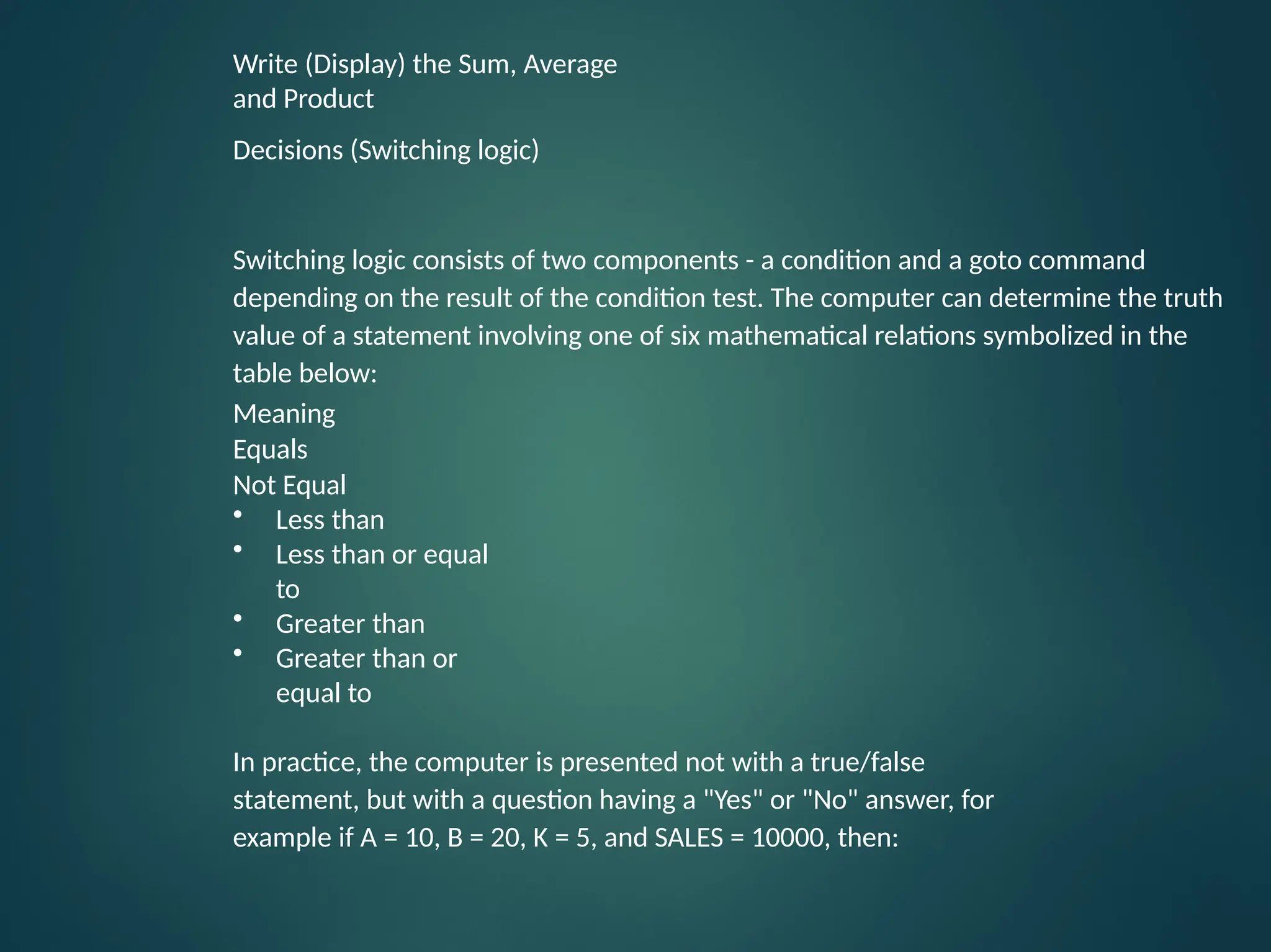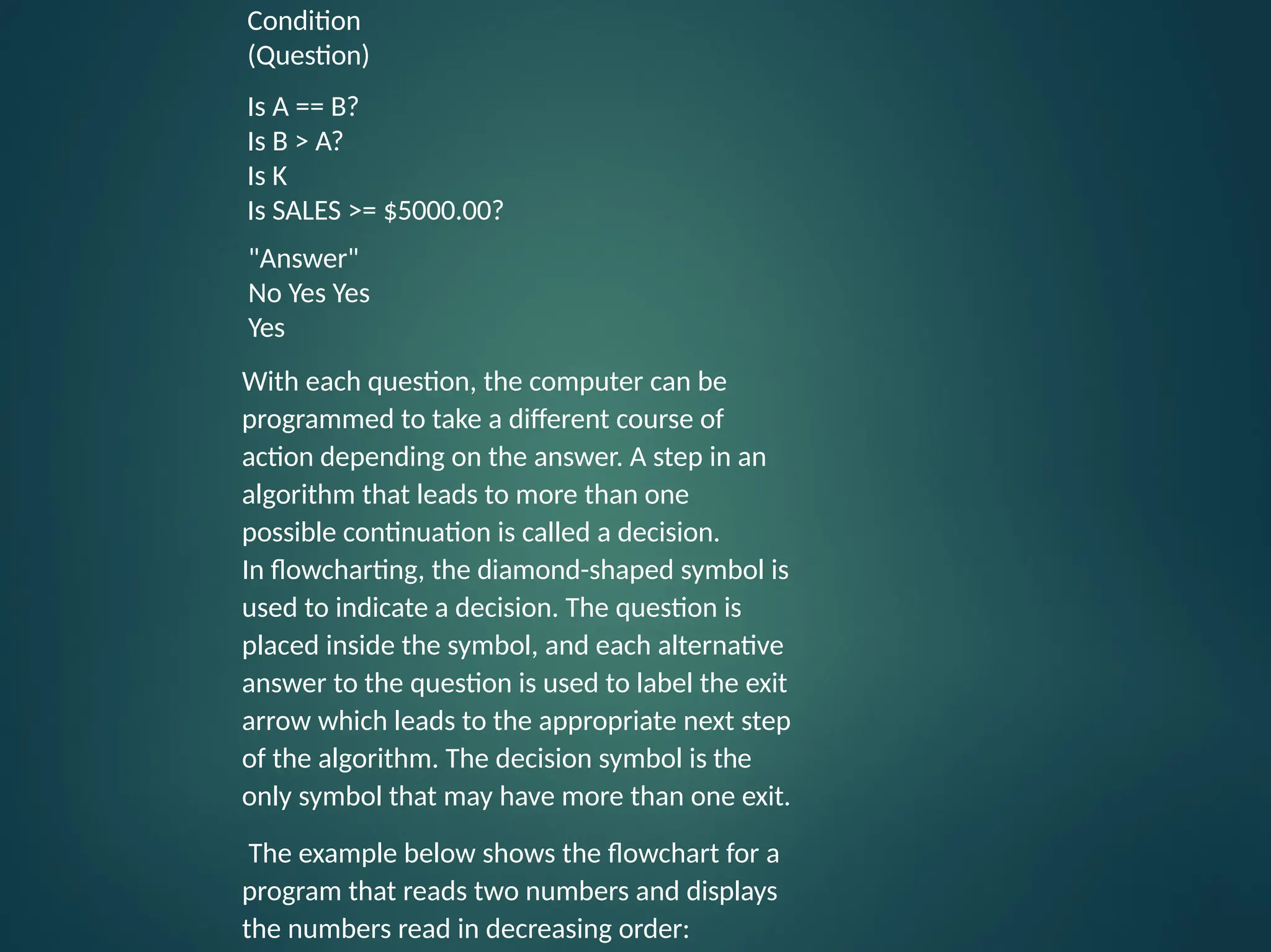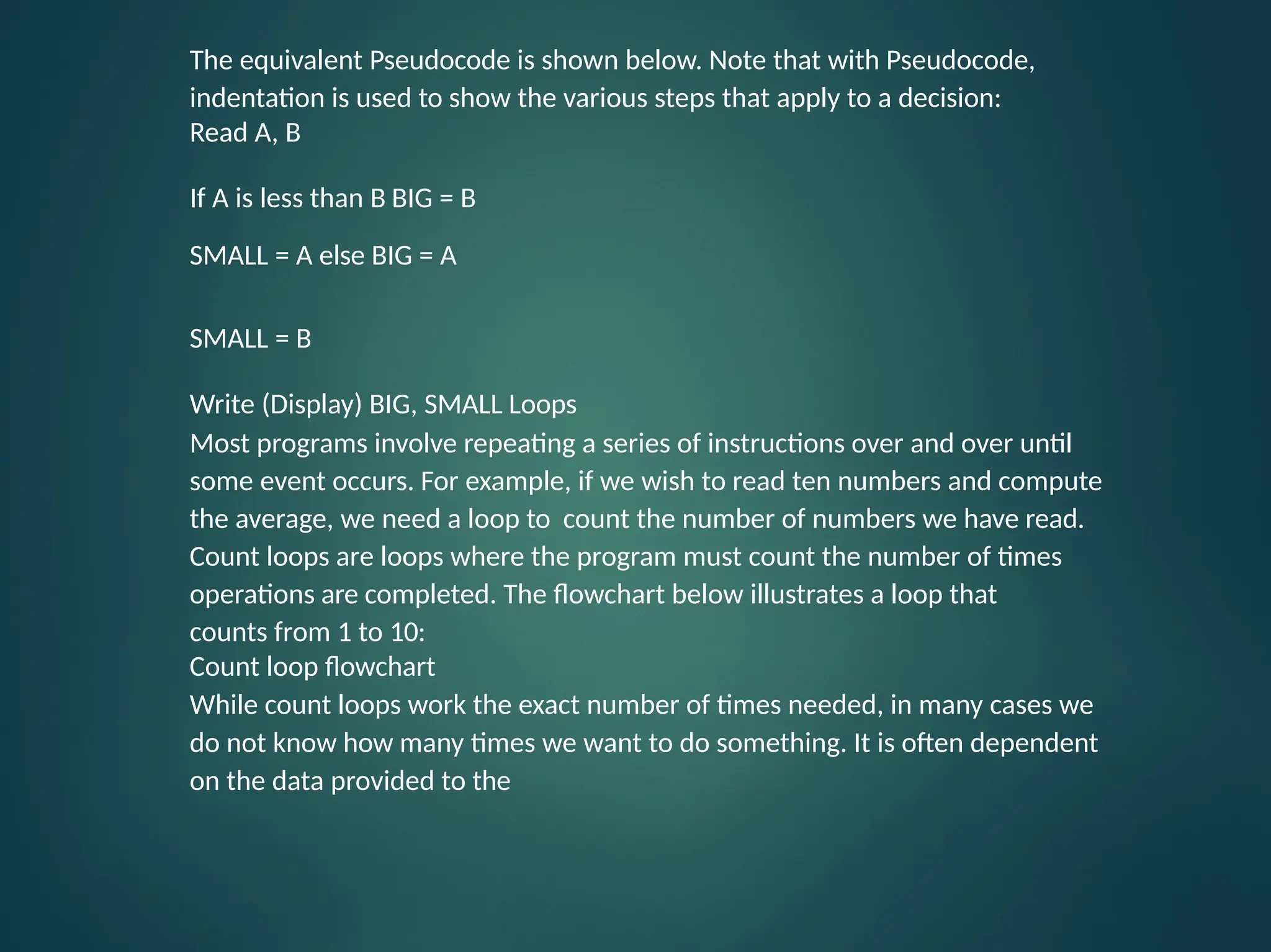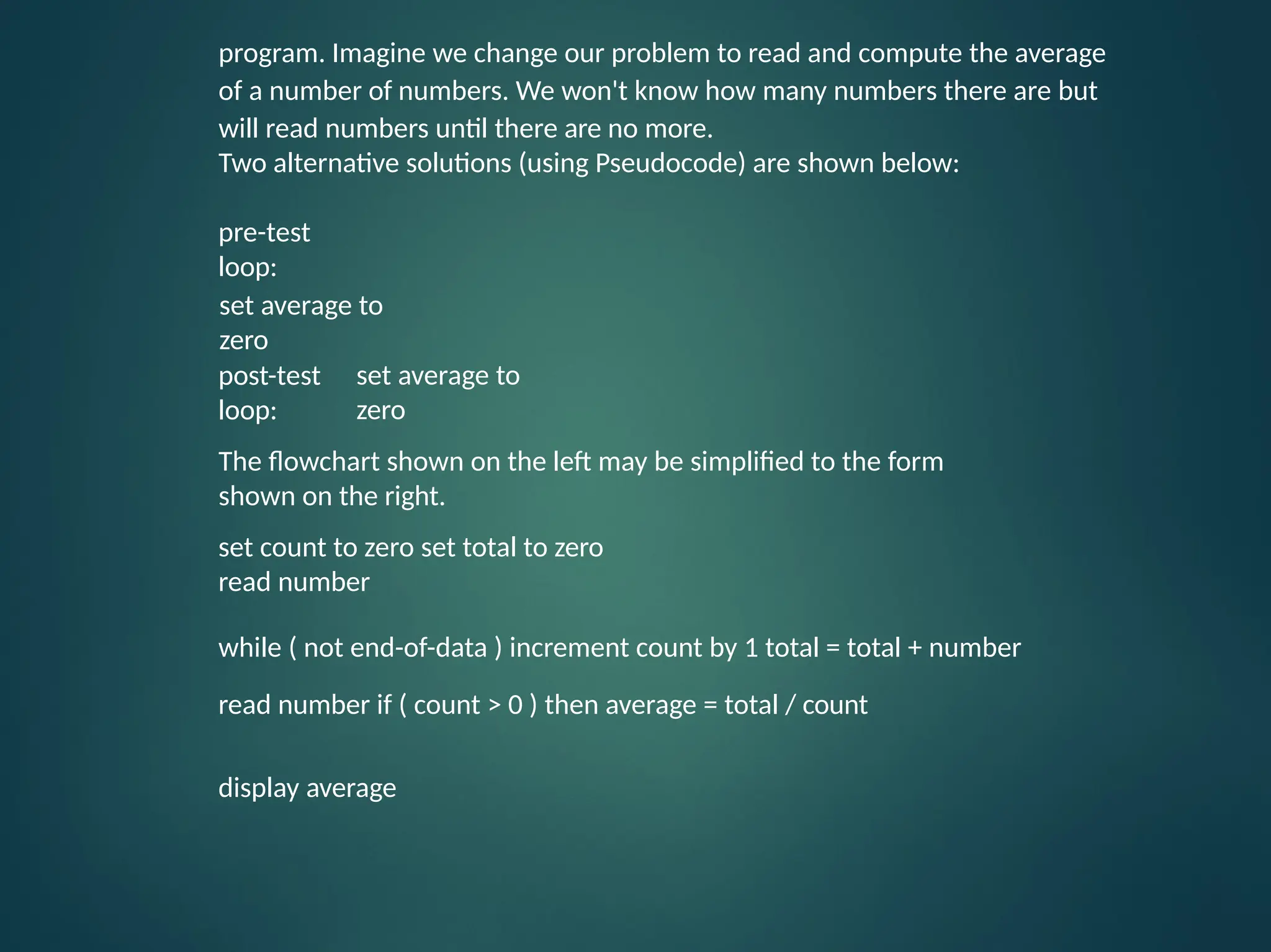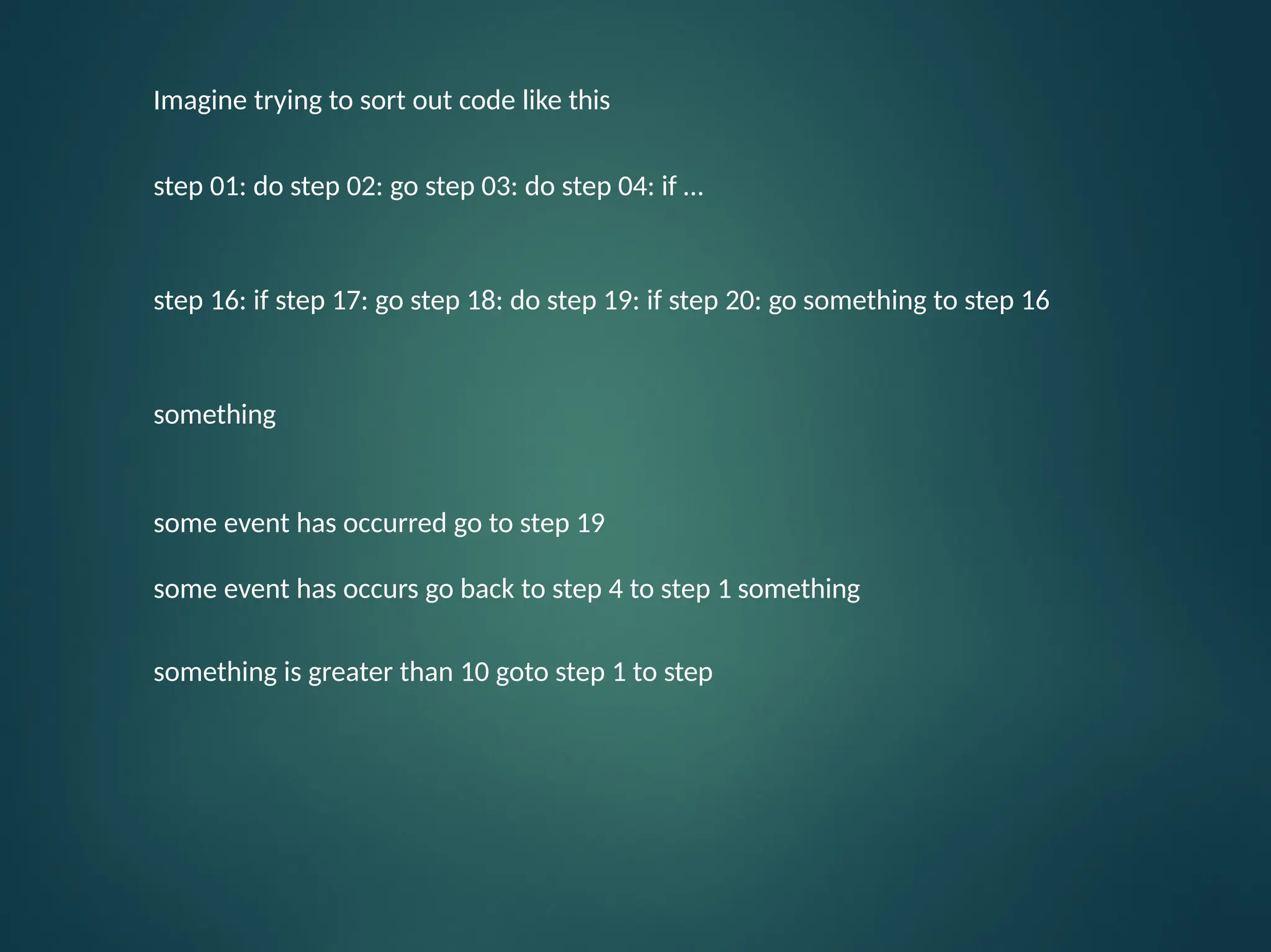Pseudocode is a method of describing algorithms in a human-readable form that resembles programming languages, without adhering to any specific syntax. It is a useful tool for documenting program logic and is often accompanied by flowcharts to visually represent processes. The document also discusses how pseudocode is utilized to describe algorithms, decision-making, and looping structures in programming.

